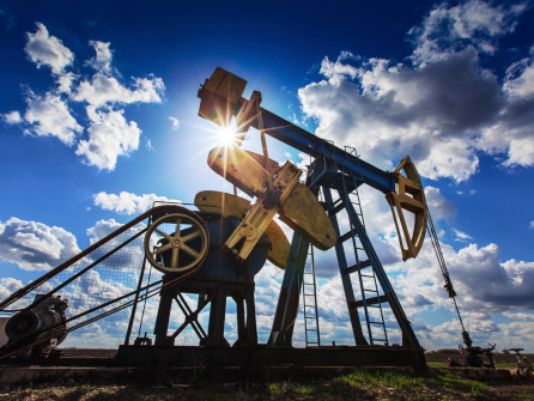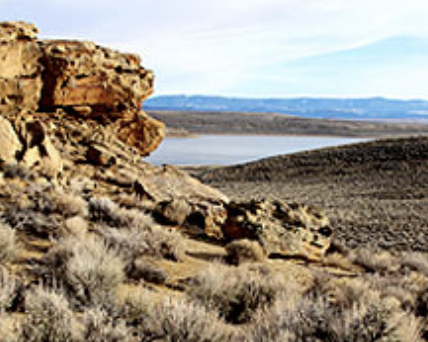By Camille Erickson
Casper Star-Tribune
Via- Wyoming News Exchange
CASPER — Wyoming lawmakers once again deliberated introducing more tax relief for oil and gas operators on Tuesday, with the aim of spurring additional mineral production and capital investment in the state as it struggles to recover from the economic collapse in energy markets.
The Legislature’s Joint Minerals, Business and Economic Development Committee advanced a bill that, if passed during the session, would reduce the state’s mineral tax rate by half when oil and gas prices fall within certain price ranges. Oil and gas operators could only reap the benefits of the relief for a consecutive six-month time span. The reduction, which would cut severance tax rate from 6% to 3%, would apply to oil or gas produced from new wells or previously shut-in wells revived by operators during the designated period.
For sweet crude producers, oil prices must reach an average of $45 a barrel for 30 consecutive days before qualifying for the tax cuts. For sour crude producers, the price of the commodity must meet or exceed $38 a barrel.
After calls from the Petroleum Association of Wyoming to consider the plight of natural gas producers in the state, the committee members amended the initial draft bill. The proposed legislation now includes gas operators, too. Natural gas producers would pay just half of the state’s severance tax when the price of natural gas exceeds $3 per thousand cubic feet.
But some conservation and taxpayer advocates came out in opposition to the bill on Tuesday, citing the tax break’s drain on the state’s already vulnerable revenue streams.
Slumps in mineral production translate into less tax revenue for Wyoming, a state deeply dependent on extractive industries. Revenue from energy touches nearly every resident living Wyoming, with oil and gas money flowing into the state’s general fund, schools and basic infrastructure.
Mineral production made up nearly half of all property taxes received by the state in fiscal year 2019, according to state data. That doesn’t include the severance taxes paid by operators, which accounted for 21% of tax contributions made last year.
“Tax exemptions for oil and gas do not raise revenue or generate employment,” said Monika Leininger, a community organizer with the Powder River Basin Resource Council, a landowners group. The whims of the global oil and gas market fell far outside the lawmakers’ control; reducing taxes wasn’t worth it, she added.
“During these looming challenges, I don’t think we can afford a cut to a revenue structure that’s bringing money to our state,” she continued. “These are nonrenewable resources, we only have one chance to get a return on them, not just for us, but for future generations as well.”
The Legislative Service Office has not yet provided a fiscal note for the bill, which details how much money the state could gain or lose if the policy is enacted.
“You can’t pass the bill as currently written because the financial impact would be horrendous,” Larry Wolfe, a longtime energy and natural resource attorney in Wyoming, told lawmakers during the public comment period.
“Tinkering with the tax code in this way requires a lot of thought and you’re going to cost the state millions of dollars,” he added.
“We need every penny of these severance taxes,” echoed Stephanie Kessler, program director at the Wyoming Outdoor Council.
But Pete Obermueller, executive director of the Petroleum Association of Wyoming, pointed to the abysmal rig count in the state, profusion of shut-in wells and the need to help oil and gas operators get back on their feet.
“The fiscal situation that the state is facing, that is very, very real,” Obermueller said. “And that’s because we don’t have rigs running and we have shut-in wells. This bill addresses how we overcome that and get rigs back and wells producing.”
Oil prices have plunged amid the spread of COVID-19 and a global price war. Several major oil and gas companies have trimmed their workforces, reeled in expenses and halted production.
The rig count in Wyoming — a prime indicator of how much drilling activity is occurring — fell from 30 rigs in March to one lonely natural gas rig, as of Friday.
For every rig lost, approximately 100 oil and gas jobs are also lost, according to the Petroleum Association of Wyoming. Though prices have rallied in recent weeks, inching just over $40 a barrel, a full recovery for Wyoming’s producers appears far off. West Texas Intermediate, a U.S. benchmark for oil, was at $40.95 a barrel Tuesday, leaving several Wyoming operators unable to break even when drilling.
“The public is out there saying, ‘Wow, you’re giving tax breaks,’” said Rep. Dan Furphy, R-Laramie, in defense of the draft bill. “What we’re trying to do is stimulate the economy and create jobs.”
The committee voted to advance the bill 10-2, with Sen. Chris Rothfuss, D-Laramie, and Rep. Tom Crank, R-Sweetwater, opposing.
Rob Godby, University of Wyoming economist and associate dean of the Haub School of Environment and Natural Resources, said he understood both sides.
“It may seem strange to give away that revenue, but the problem is if we don’t, (operators) might stop producing. And if they do that we may lose more in the long term if they don’t come back,” he told the Star-Tribune. “The idea is to keep them operating in Wyoming. They’re trying to set up an intertemporal trade off.”
However, Godby noted he was not in favor of a permanent reduction in severance taxes for oil and gas operators.
The proposed legislation would supplement other relief efforts already extended to the industry by the Legislature this year.
In March, Gov. Mark Gordon signed into law a bill providing other reductions in the state mineral tax amid certain price environments. But several operators have said these cuts wouldn’t take effect soon enough to adjust to today’s price environment, which has been ravaged since the legislation was introduced. The tax break only kicks in if the 12-month rolling average of oil prices falls below $50 per barrel, above today’s prices. For natural gas, the 12-month rolling average would need to be less than $2.95 per thousand cubic feet. In these scenarios, the state’s mineral production tax would be reduced by 2% under the new act for the first six months of any new production.
In addition, the Wyoming Oil and Gas Conservation Commission announced in April it will not require producers to pay the state conservation tax for six months in response to the depressed market conditions.
The federal government also extended temporary royalty reductions in May to eligible oil and gas companies operating on public land in light of the pandemic and economic recession. So far, the Bureau of Land Management has granted operators working in Wyoming royalty rates reductions in 297 cases, often reducing the rate from 12.5% to 1.5%. About half of federal royalties flow back to the state of Wyoming.






